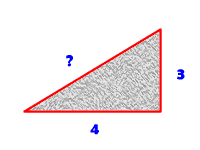Hey everyone hope you had a fun Halloween and enjoyed your weekend! But remember to keep up with your homework and don't forget about Pre-Calculus.
THE UNIT CIRCLE
The "Unit Circle" is a
circle with a radius of 1.
Using the unit circle makes it easy
to find the values of trigonometric functions at quadrantal angles.
For
example, a 90º rotation from the positive x-axis puts you on the
positive y-axis, which intersects the unit circle at the point (0, 1).
From this, you know that (cos 90º, sin 90º) = (0, 1).
This is a graph of the values of all three trigonometric functions at
each quadrantal angle:
Important Angles 30º ,
45º , 60º
Most angles on the unit circle are
based on the reference angles of either 30º , 45º , 60º
You should remember the special
triangles from grade 11 , If not here is a labeled diagrams to help you.
Finding the missing side of a right
triangles
Finding the missing side of a right
triangle is a pretty simple matter if two sides are known. One of the more
famous mathematical formulas is a2+b2=c2, which is known as the Pythagorean
Theorem. The theorem states that the hypotenuse of a right triangle can
be easily calculated from the lengths of the sides. The hypotenuse is the
longest side of a right triangle.
If you're given the lengths of the
two sides it is easy to find the hypotenuse. Just square the sides, add them,
and then take the square root. Here's an example:
Since we are given that the two legs
of the triangle are 3 and 4, plug those into the Pythagorean equation and solve
for the hypotenuse:
a2+b2=c2
32+42=c2
9+16=c2
c=5
If you are given the hypotenuse and
one of the legs it's going to be slightly more complicated, but only because
you have to do some algebra first. Suppose you know that one leg is 5 and the
hypotenuse (longest side) is 13. Plug those into the appropriate places in the
Pythagorean equation:
a2+b2=c2
52+b2=132
25+b2=169
b2=144
b=12
Thank you for reading my blog post, I hope this post helped you review/ learn about the unit circle and the special triangles involved.
-Ravinder Sehira
sources:
Pre-calculus 12 McGraw-Hill Ryerson- Text Book
Pre-Calculus 40s Unit 4 Circular Functions- Notes
sites:
http://www.freemathhelp.com/q6-right-triangle.html
http://www.mathsisfun.com/geometry/unit-circle.html
http://www.wyzant.com/resources/lessons/math/trigonometry/unit-circle





No comments:
Post a Comment